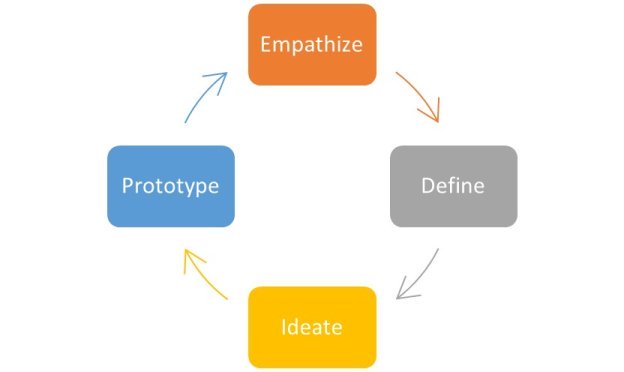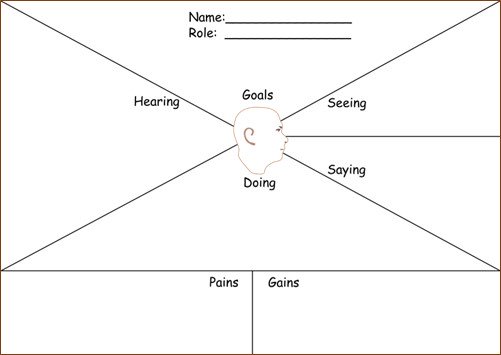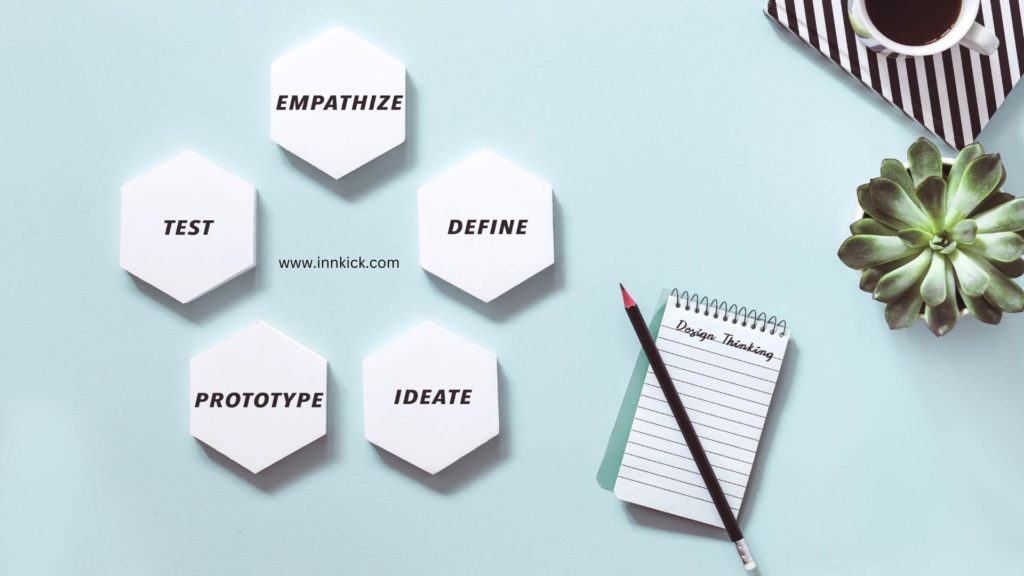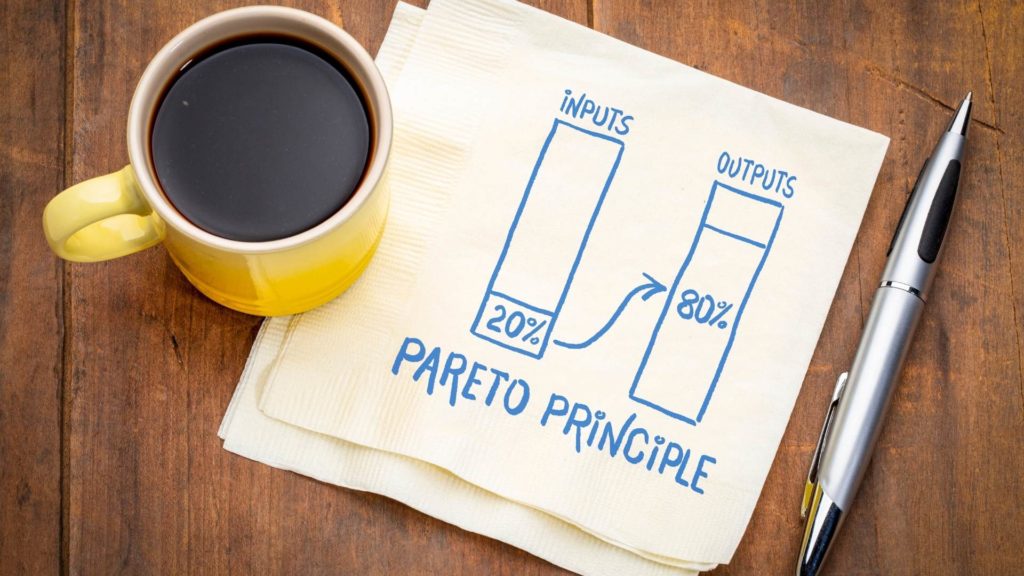“Life is too short to build something nobody wants” – Ash Maurya, Running Lean. That’s why we’ll use Design Thinking.
Design Thinking is a problem solving process that is human-centered, focused on co-creation and iterative experimentation. It is not a linear process and can move between the different stages. Let me explain you what is design thinking.

4 Stages of Design Thinking
1. Empathize
Exploration, getting to know your customer – the work that you do to understand the people you want to serve and solve a problem for.
It’s the observations and conversations you have with a potential audience or market to gain a better understanding of their challenges, needs, desires, etc. This can be accomplished through casual observation and interaction, by analyzing social media posts or exchanges, and more.
2. Define
Pinpoint and define the need – bringing clarity and focus based on what you have learned to craft a meaningful and actionable problem statement.
In other words, this is a very analytical step resulting in a well-understood and articulated need. Everything we observe and unearth in the Empathize step is considered, synthesized, and formed into a very focused “problem statement.” What is the specific problem we’re trying to solve with an innovative new product/process? The Define step helps us give structure and definition to the challenge or problem.
3. Ideate
Develop a large list of ideas (casting a wide net) – Now that we know which sandbox we’re playing in (as defined in the last step), we can start digging. Stanford refers to this as “concentrating on idea generation, going wide in terms of concepts and outcomes.” A couple of criteria are essential for success in this mode:
Define the boundaries—effective ideation requires guardrails. “Blue-sky” thinking may sound very creative and romantic, but it really isn’t practical in the development of effective solutions to specific problems or needs. We must remain grounded by the end goal.
Keep an open mind—no ideas are bad ideas at this point; everything is on the table (within the established guardrails). Ideas will be judged on feasibility later, but now is the time to push the boundaries and consider all possibilities.
4. Prototype
Develop and refine rough ideas – Prototype–Here something is being built or developed to communicate what the product would be like. Stanford makes the case that this is a “build to think” mode. That is, early prototypes can be very rough depictions of a product idea (sketches, paper, or foam renditions—think paper airplane types of models). They are to provide stimulus for discussion and interaction for the purpose of refinement and further feedback.
At this step, the learning is quick and iterative. We depict or build ideas rapidly and inexpensively so that we can learn what we need to learn and keep moving. Once this process is complete, we are ready for more formal testing.
Here we have the validation process. Interviews, feed forward sessions with your stakeholders. Doing job shadowing, showing empathy. Hear their stories. Observe what they are doing and how to understand if your solution will be solving the challenge.
Here is an empathy map, that you can use to put yourself into the shoes of your client.

Test
In this step, as Stanford says, we “solicit feedback, about the prototypes you have created, from your users and have another opportunity to gain empathy for the people you’re designing for.” More formal testing of a small number of prototypes is always recommended to elevate the new product’s chances for success. More realistic, usable prototypes are brought in at this step for end user experiences and evaluation.
- a) Build/Make/Do something that will test your idea
- b) Can be – a drawing, a paper model, a comic, sketch of an application or even… roleplay!
- c) Present it to your own team to test the idea…
- d) Must be good enough for a walkthrough or demo with your stakeholders… Be ready to do user testing for 10 minutes!
- e) Record the feedback on…


Desired, Feasible & Viable
A true process, based on making sure that what you are going to produce will be usable, is feasible and desired.
- Desired: Does the customer want it?
- Feasible: Can we resource and build it? Does it work operationally or technically?
- Viable: Does it make business sense? Can it scale? Is it sustainable?
Many ideas will not work. Assumptions / hypotheses need to be validated. But the learnings from a first, second, third idea will increase chances of success.
Coming from the corporate world and being a project manager myself, I have witnessed so many projects which started but could not be finished, completed. Reasons being:too expensive, to many workarounds for an implemented process or product that no one wants to use it, to complex, not solving the challenged of the stakeholder, either internal or external customer.
That’s why, the very first step is vital to make sure you understand, listen, and ask open questions. At this point I would like to recommend to you to watch a wonderful TEDx talk that brings me to laugh still, each time I watch it.
Design Thinking is the Fundamental of Project Management
Whatever you are going to implement, start with putting yourself in the shoes of the other person. Sit together with them, be curious, open and invite then to speak up, create that safe space so that you or your team knows exactly what’s going on. Quite often, ideas or projects do come from the top, senior managers and they don’t know all the details. And this is ok. However, who takes on to project building and implementing needs to start with step number 1, followed by step number 2 to articulate the problem in simple language.
Now you need the Subject Matter Experts. People who live the pain point and know how the result should be. They don’t need to know necessarily how to get there. This is the project Managers or teams’ responsibility.
Open invitation for brainstorming. No idea is bad, no idea is good. Just poor out what comes to the mind. For that you can create a SWAT team, some SME’s who are early adopters, who are willing to be part of the project. But people who know what they are talking about.
Once all is listed on post its, on Mural or whatever you would like to use, it is time to analyse what is feasible, realistic, time consuming or practical. Having in mind the organization’s overall goal, you need to summarise the most suitable ideas. It is like you have the hat of the creator, then you change to the hat of the realistic and then the critical person, who thinks about budget, time, and resources.
Design Thinking: Time to Decide
Once all on paper, it is time to decide for one of the ideas and test it. Immediately. You don’t need to have a fleshed-out process or product. Sketches, first access to the new system, tyring out with your early adopters and get instant feed forward. Yes, feed forward and not feedback as it is a way forward.
And if it is not realistic, feasible at all, have the courage to drop the whole idea and try a new one or if you need to stick to it, change it or the best, be honest and communicate to your senior stakeholders. Believe me, senior managers do want to implement something that employees or customers used.
Once implemented and your process or product is in use, make sure to get feed forward. Encourage your audience to comment, give improvement ideas as nothing is perfect.
Once the audience starts to use it, it will be apparent what are the blind spots and what needs to be refined.
It is like writing a book. You have the draft-send it to the editor- the editor comes back with tons of changes and improvements. You adopt them and there is the next round of editing. This time it will be more the finesse we are looking for.
The same applies for any process or product. Conduct constant interviews, have drop-in sessions, sit together with your stakeholders, be on the ground, in the field to see for yourself what are the challenges, if any.

80 / 20 Rule
Own your project until the end. You might ask, there will be never an end. This is where you should apply the 80/20 rule. If 80% is usable, the 20% we might be able to absorb as glitches, depending on what it is, which is missing.
Happy Design thinking…
